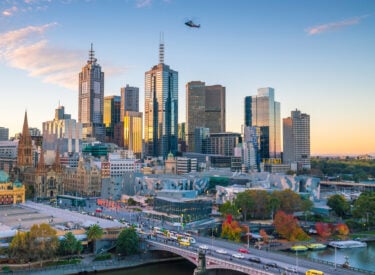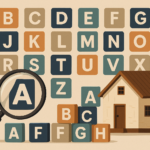
Key takeaways
The dream of home ownership , or even just affordable renting, is slipping further out of reach.
The issue isn’t simply population growth or greedy developers. The real culprits lie deeper within policy, tax, and planning structures.
Until we deal with the policy-level supply constraints, prices will remain high, not just because demand is strong, but because government-induced bottlenecks are choking supply.
Australia’s housing crisis has become impossible to ignore.
For first home buyers, renters, and even seasoned investors, it feels like the dream of affordable housing is slipping away.
But what’s really driving the shortage?
And where does all the money go when a new home is built?
In summary, there are three main culprits to this housing shortage and affordability catastrophe.
- Government taxes and charges.
A report prepared from the Housing Industry Association states, “ In 2023–24, in Sydney, we estimate that of the total outlay made to acquire a new house & land package in a Greenfield estate (about $1 182 000), 49 per cent (around $576 000) is made up of regulatory costs, statutory taxes and infrastructure charges”. - Insufficient infrastructure.
In the Kevin Costner movie Field of Dreams, there is a comment made, build it and they will come. This statement sheds some light on the topic. People need access to land and transportation to get to their place of work, for enjoyment, or to visit family. Lack of infrastructure is forcing people into an ever-narrower choice of where to buy. - Social Housing or should I say lack of.
In 2023, the percentage of Australians living in social housing was approximately 4%. There has been a steady decrease over the past 20-30 years, when in mid-1990 the percentage was 6.5%. The lack of a coherent government policy and expenditure program is forcing more people into an already exhausted rental property market.
Let’s look at how governments, at all levels, are making the problem worse, and the eye-watering taxes and charges quietly driving up the price of new homes.

How Governments and Councils are holding back housing
Contrary to popular belief, the main problem isn’t just greedy developers or population growth; it’s government policy and planning restrictions.
Here's how:
1. Zoning Laws that restrict supply
Local councils and state governments keep large areas locked up in low-density zoning, even in inner-city suburbs.
That means you often can’t build townhouses or apartments where people want to live.
2. Slow and bureaucratic approvals
Obtaining development approval can take years.
Councils are often bogged down in red tape, and projects can stall due to local opposition -known as NIMBYism ('Not In My Backyard').
3. Lack of infrastructure
Even when land is zoned, it often lacks the necessary infrastructure, such as roads, water, schools, and public transportation, to support new housing.
Without these basics, councils delay or deny developments.
4. Political fear
Many local politicians are scared of upsetting existing homeowners, who often oppose higher-density housing.
This fear blocks much-needed reform.
Let’s say a developer jumps through all the hoops and gets the green light to build. What next?
A tsunami of government taxes and charges, from all levels of government.
Here’s what’s typically added to the cost of building a new home:
Federal Government
- GST (10%) on new dwellings.
- Capital gains tax and income tax on developer profits.
- Non-deductibility of interest expenses during construction for investors
- Foreign withholding rules for international investors. Less than 1% of existing houses are purchased by foreigners. While the figure for new housing was 7.9% in Q1 2023, developers need a base level of sales to begin a project, and foreign buyers tend to pre-purchase off the plan. Investment in new construction helps drive the economy.
State Governments
- Stamp duty: 4–6% on the land purchase.
- Land tax on holdings during construction and after for property investors.
- State Governments' total taxes revenue associated with houses is approximately 50%.
- Foreign buyer surcharges (stamp duty and land tax).
- Massive developer infrastructure charges, often $30,000–$100,000+ per dwelling.
- Fees for planning panels, building approvals, and compliance.
Local Councils
- Development application (DA) fees.
- Local infrastructure contributions for roads, parks, and drainage. Typically, this adds up to 0.5-1.0% of total construction costs. This figure can be higher in new areas.
- Open space or public art levies.
- Building inspection, occupancy permits, and even waste management fees during construction.
Total tax impact: up to 49% of a home’s cost
When you add it all up, government-imposed costs can make up 40-50% of a new home’s price, and sometimes more in high-growth areas.
That means before a builder lays a brick, tens or even hundreds of thousands of dollars have already been baked into the final price tag — all thanks to government taxes, levies, and red tape.
There are, of course, three other elements to this story
- A reduction in tradesmen. For many reasons, it became unfashionable to be a “tradie” and the Labour Government reforms and incentive payments, especially in 2009, increased children attaining year 12 education from 72% in the early 2000 to 88% by 2015 thus reducing the pool of people going to trade school and wanting a university degree.
- Green and red tape are strangling the supply of building materials, which impacts price and availability, and forcing the industry to import more and more.
- A banking regime instigated by the Reserve Bank and APRA that penalises residential property investment borrowings.
So what’s the fix?
The situation we find ourselves in has taken 30 years to materialise, and like the parable of the frog and hot water, a slow burn is less felt.
The solutions will take many years to implement, but some of the problems have a quick fix, such as reducing government imposts, implementing a more suitable planning regime, and freeing up the finance sector.
If Australia wants to solve its housing crisis, we need to stop pointing fingers at buyers and builders and start looking at policy failure.
The solutions aren’t complicated — they’re just politically not front of mind:
- Reform zoning to allow more housing where people want to live.
- Speed up planning approvals.
- Invest in infrastructure to unlock developable land.
- Simplify and reduce development levies and taxes.
- Coordinate better across federal, state, and local levels.
Until these reforms happen, prices will stay high, not because of demand alone, but because supply is being choked at the policy level.














